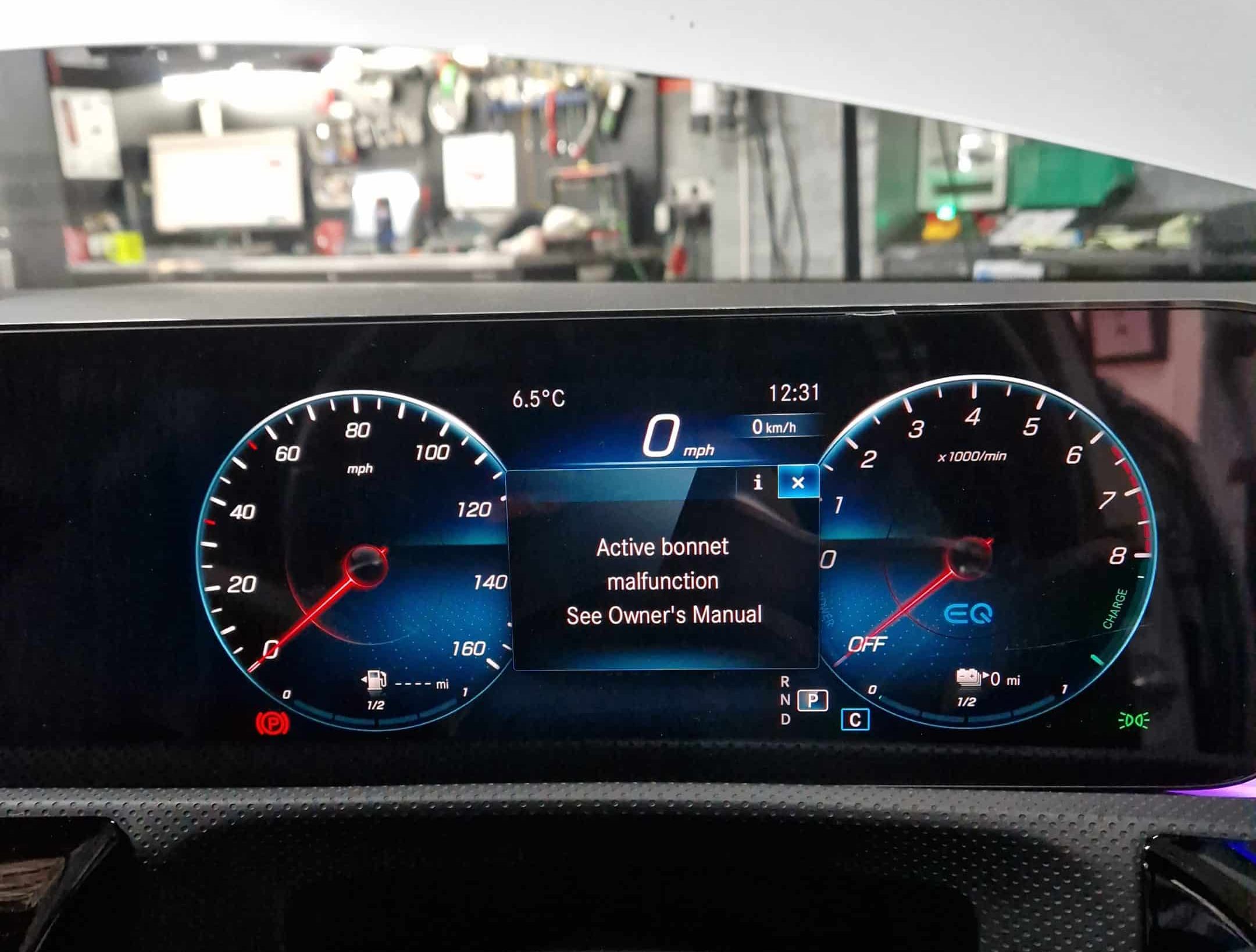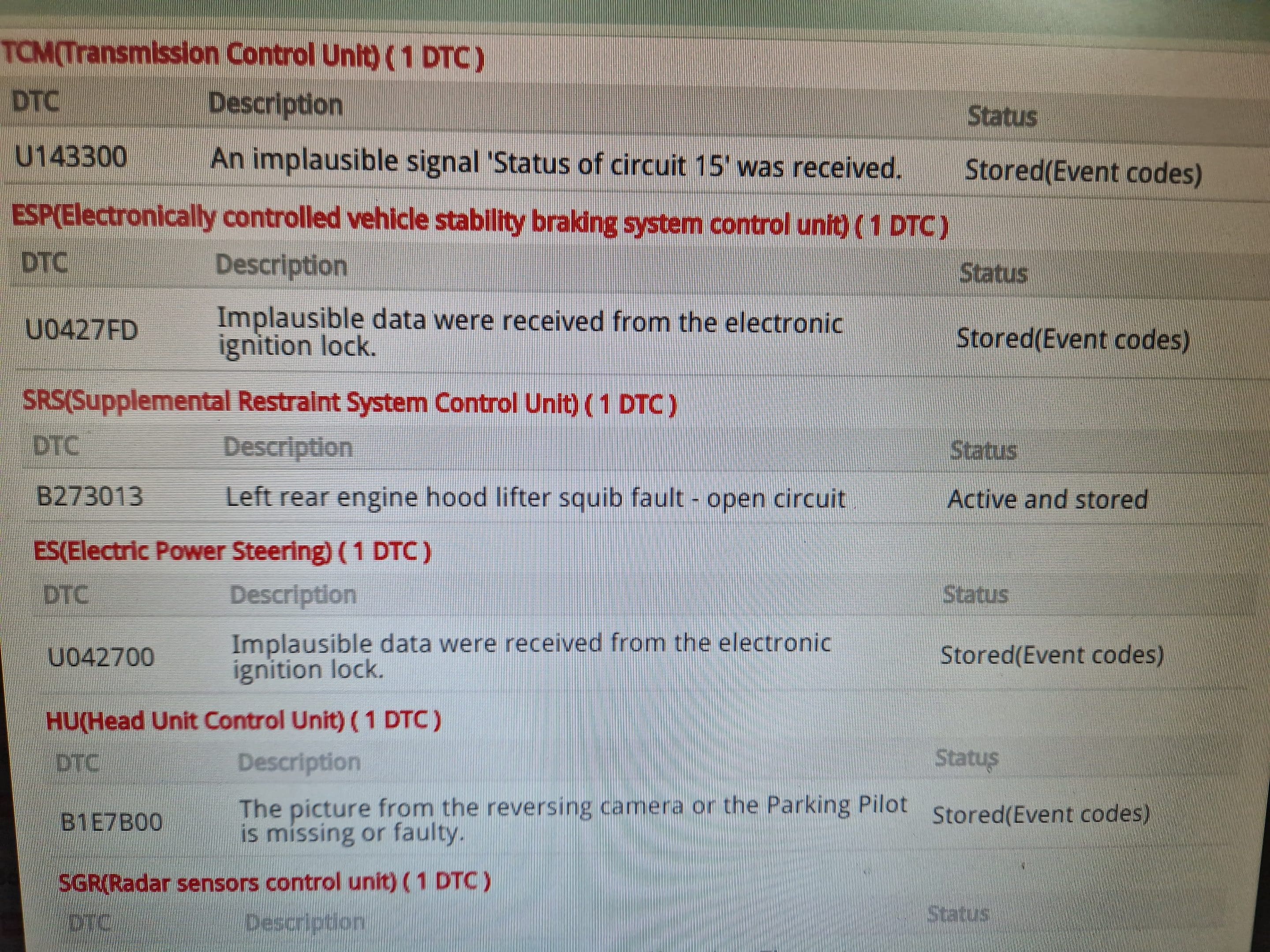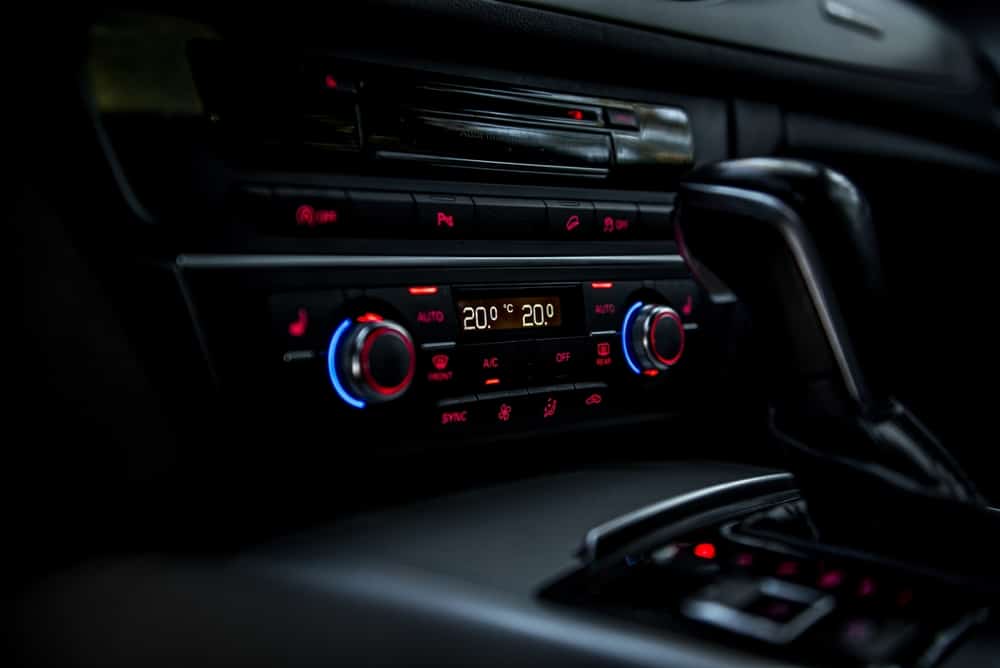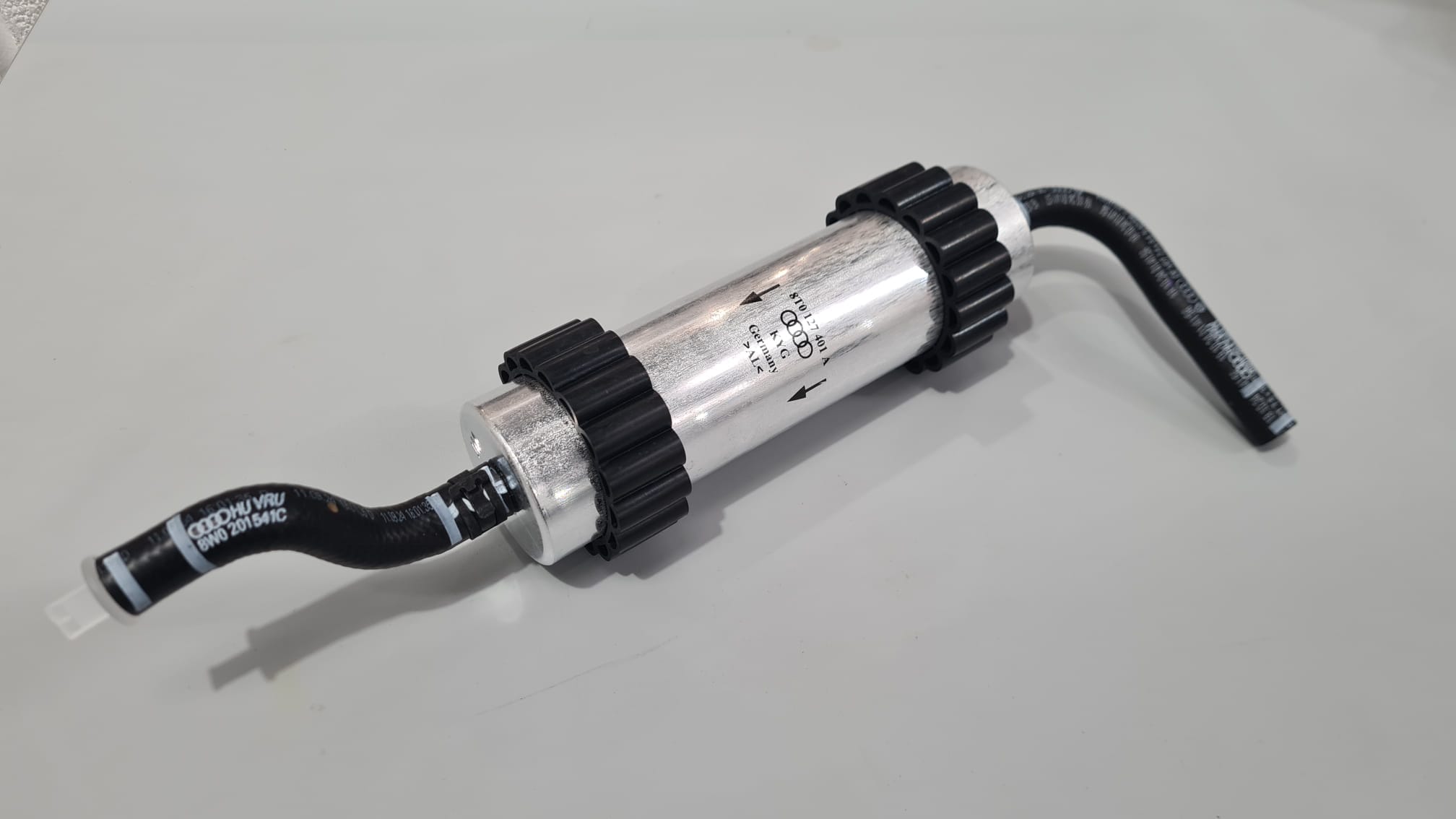Active Bonnet Malfunction
Mercedes put a lot of clever thinking under that bonnet — and not just to make it go faster.
Hidden in the hinges is a system that can react faster than the blink of an eye, lifting the bonnet in a split second to soften the blow if the unthinkable happens and a pedestrian steps out in front of you. It’s the kind of engineering you hope you’ll never need… but you’d want working perfectly if you did. It’s called the Active Bonnet system.
When that system failed on an A-Class in Brownhills, it wasn’t a job for guesswork. Our team’s Mercedes know-how, methodical diagnostic process, and years of fault-finding experience meant we could track down the exact cause and fix it right the first time. There were no unnecessary part swaps, no “try this and see,” just a precise repair that restored the car’s safety credentials.
Here’s how we uncovered the fault, confirmed it beyond doubt, and returned this Mercedes to the road ready to protect in the moments that matter… all without the dealership price tag.

What Is The Mercedes Active Bonnet System?
The Active Bonnet system is a safety feature built into the Mercedes A-Class to help reduce injury to pedestrians during collisions. It works by using small pyrotechnic devices, called squibs, at the rear bonnet hinges to lift the rear edge of the bonnet by around 80 mm in a fraction of a second. This sudden “pop-up” creates a crumple space between the bonnet and the hard engine components beneath, cushioning the impact and helping to minimise injury if a pedestrian is struck.
The system is controlled by the car’s Supplemental Restraint System (SRS) control unit, which works with dedicated crash sensors in the front bumper to detect a qualifying impact. Each hinge has its own bonnet lifter, and once deployed, the bonnet stays in a slightly raised position until reset. While it can be pushed back down to allow the car to be driven, the protective function remains compromised until the fault is properly repaired.
Our Initial Evaluation (Fault Code: B2730)
When the Mercedes A-Class arrived at Fitch Autos, the owner was concerned about the dashboard alert: “Active Bonnet Malfunction – see owner’s manual.” This isn’t something you can afford to dismiss. If the system isn’t working, that extra layer of pedestrian protection simply won’t be there when it’s needed most.

We connected our Mercedes STAR diagnostic tool, the official platform used in main dealerships, to the car’s onboard systems and ran a full system scan. STAR gives us direct access to manufacturer-level data and guided test procedures. The test revealed a stored fault: B2730 – Left Rear Engine Hood Lifter Squib Malfunction. In plain English, the SRS control unit had detected an issue in the left-hand bonnet lifter’s squib.
This told us where the system had spotted a fault, but experience has taught our Mercedes specialists that a code is just the headline, not the full story. Codes don’t tell you why the fault is there, only that the system has flagged it. To get the real cause, we followed our structured multi-step diagnostic process, checking serial data, wiring integrity, connectors, and related control modules to confirm the exact point of failure, and to ensure there were no hidden issues waiting to trigger another warning.

Finding the Root Cause of The Active Bonnet Malfunction
With the initial scan complete, we moved into a full investigation. At Fitch Autos in Brownhills, that means applying our structured multi-step diagnostic process and using our proven Mercedes expertise, all backed by the same Mercedes STAR diagnostic system and technical data that main dealerships use.
We began by checking Mercedes-Benz’s official technical information for guidance on Fault Code B2730. The documentation confirmed that this code relates to an electrical fault in the squib circuit for the left-hand bonnet lifter. Knowing this, our task was clear: find out why the circuit was registering a fault, not just assume the lifter was at fault.
Using the STAR tool, we ran serial data comparisons between the left and right bonnet lifter circuits. The right-hand circuit behaved normally, but the left-hand showed no measurable signal, which is a sign of an open circuit. This kind of side-by-side testing is crucial; by using the healthy side as a control, we could confirm the fault was genuine and isolated.
Next, we carried out a detailed inspection of the wiring harness and connectors feeding the left lifter. We looked for corrosion, damage, or loose terminals, then performed continuity and resistance checks to verify that the wiring could carry the correct signal. Everything tested within specification, meaning the wiring was sound.
With wiring and connectors ruled out, and live data consistently showing an open circuit at the left lifter squib, we concluded with confidence that the lifter itself had failed internally. This methodical approach meant we could replace the correct part the first time, avoiding guesswork and unnecessary expense, and ensuring this safety-critical system would soon be fully operational again.
Fixing the Mercedes-Benz Active Bonnet Malfunction
With the diagnosis confirmed, we contacted the customer to explain exactly what we had found and how we intended to fix it. Transparency matters – especially when dealing with safety-critical systems like the active bonnet. Once we had their approval, we followed Mercedes-Benz’s strict safety procedures for handling pyrotechnic devices, disconnecting the battery and allowing the system to fully discharge before removing the faulty left-hand bonnet lifter.
The new lifter was installed to the manufacturer’s torque specifications, ensuring correct alignment and secure mounting. Using our STAR diagnostic tool, we compared the left and right bonnet lifter circuits. This step is essential – without it, the control unit may still log a fault and disable the system.
Finally, we carried out a full post-repair check. This included clearing the stored fault code, confirming that the active bonnet system now showed as fully operational using serial data, and ensuring no other related faults were present. With every safety check passed, the Mercedes was ready to return to the customer with its pedestrian protection system restored to full working order.
Mercedes A-Class Back to Full Safety Compliance
With the repair complete, this Mercedes A-Class left our Brownhills workshop with its Active Bonnet Malfunction warning cleared and the system operating exactly as intended. The active bonnet system, a key part of the car’s pedestrian safety technology, was now ready to deploy if the worst should happen.
As experienced Mercedes specialists, we pinpointed the exact fault and replaced only the failed component. Our methodical testing process, backed by dealer-level technical data and precision tools and processes, ensured the system was fully restored on the first visit. This approach eliminates unnecessary costs and ensures every repair meets the highest safety standards.
For the customer, it meant more than just removing a warning light. It meant confidence that their Mercedes’ pedestrian protection system would respond in milliseconds if needed, and peace of mind that the job had been done right.
Keep Your Mercedes Safe and Performing at Its Best
If your Mercedes shows an Active Bonnet Malfunction warning, it’s not something to put off. This system is central to your vehicle’s pedestrian protection technology — and if it isn’t working, the safety it’s designed to deliver simply won’t activate in an emergency. If you notice something isn’t right with your vehicle, call our Mercedes specialists at Fitch Autos on 01543 452630.
Our Mercedes experts in Brownhills use a proven, methodical diagnostic approach, supported by dealer-level equipment, to identify faults accurately the first time, giving you total confidence in your repair.
Other benefits of using Fitch Autos include:
- Free courtesy car to keep you moving
- 12-month parts and labour guarantee
- Dealer-level expertise without dealer prices
- Specialist equipment, information and expertise in Mercedes safety systems
We have a {{average-rating}} star Google rating from {{review-count}} satisfied customers.
Don’t take chances with your Mercedes’ safety systems. Call us today on 01543 452630 to book a technical evaluation and get your car back to full working order.


